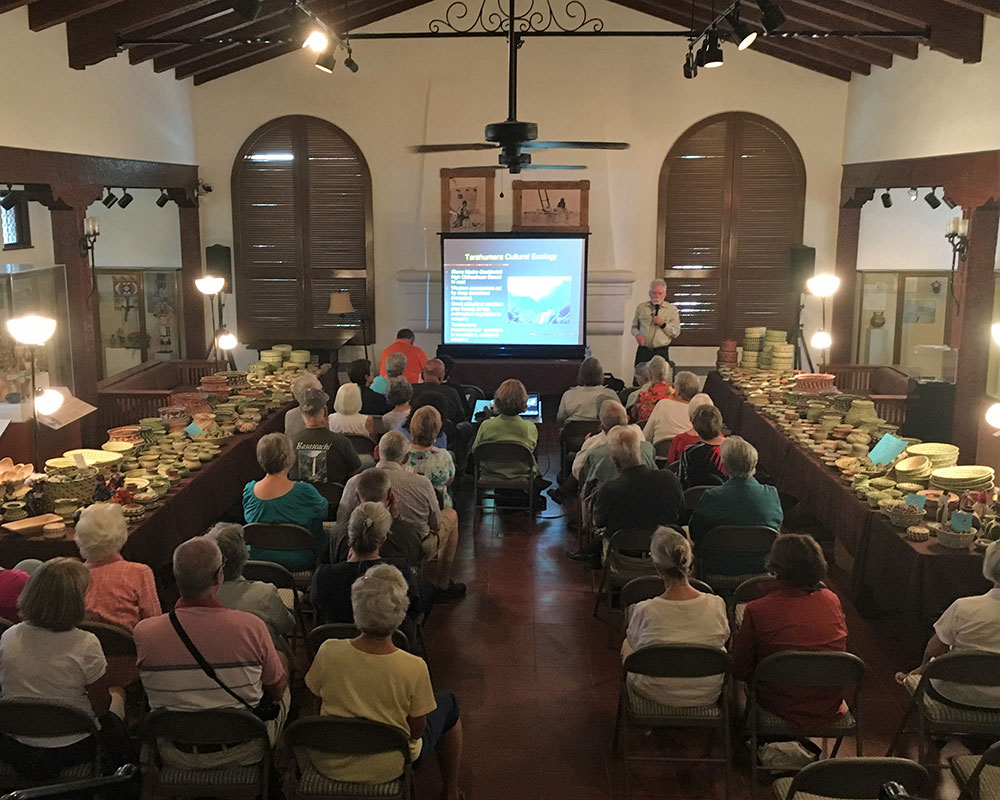Culture and Contact: Charles C. DiPeso’s Gran Chichimeca
October 3-7, 1988

Seminar Participants
- Linda S. Cordell, California Academy of Sciences
- Beatriz Braniff Cornejo, Instituto Nacional de Antropologia e Historia
- Jeffrey S. Dean, University of Arizona
- William E. Doolittle, University of Texas, Austin
- David E. Doyel, Pueblo Grande Museum
- George J. Gumerman, Southern Illinois University, Carbondale
- J. Charles Kelley, Southern Illinois University, Carbondale
- Charles H. Lange, Northern Illinois University
- Randall H. McGuire, State University of New York, Binghamton
- Bart Olinger, Los Alamos National Laboratory
- John C. Ravesloot, Arizona State Museum
- Carroll L. Riley, Southern Illinois University, Carbondale
- Phil C. Weigand, Museum of Northern Arizona
- Anne I. Woosley, The Amerind Foundation, Inc.
Seminar Abstract
Charles C. Di Peso, refusing to be limited by modern social or political boundaries, believed in the reality of Greater Southwestern prehistory. Ignoring traditional concepts of culture area that end the geographic distribution of prehistoric southwestern cultures abruptly at the international border, Di Peso viewed northern Mexico and the Southwest United States as one sphere of interaction strongly influenced by civilizations further south.
The possible impact of Mesoamerican societies on the prehistoric cultures of the Southwest has long been debated. There is little question that contact between the two existed, and that to interpret Southwest prehistory we must better understand northern Mexico and the relationship between the two. Yet for all the literature theorizing about this possible connection and its economic, political, or even ideological consequences, relatively little field research has been conducted in northern Mexico.
This conference brought together United States and Mexican scholars of diverse backgrounds but having similar interests, in part, shaped by Di Peso’s view of the Gran Chichimeca. It served as a bridge to greater cooperation between Mexican and United States archaeological communities to promote future work in a neglected region.
